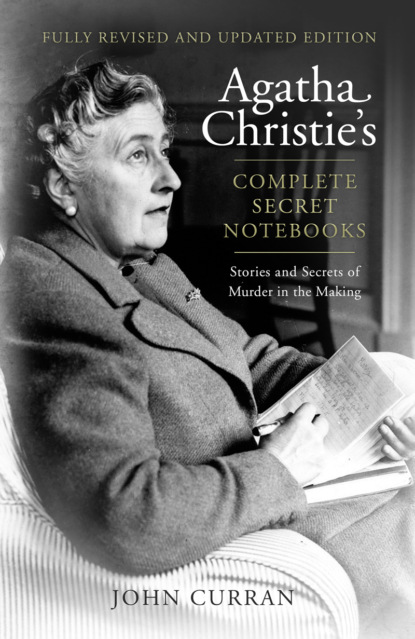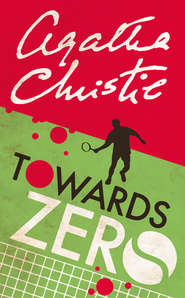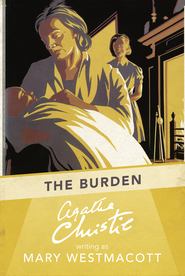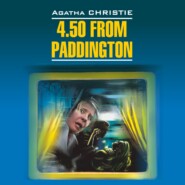По всем вопросам обращайтесь на: info@litportal.ru
(©) 2003-2024.
✖
Agatha Christie’s Complete Secret Notebooks
Настройки чтения
Размер шрифта
Высота строк
Поля
The most obvious solution
Poe’s employment of the ‘obvious solution’ of hiding in plain sight (using a letter-rack as the hiding place of a letter) is adopted, though not as a solution, by Christie in ‘The Nemean Lion’, the first of The Labours of Hercules. The solutions to, for example, The Murder at the Vicarage, Death on the Nile, Evil under the Sun and The Hollow, among others, all unmask the most obvious culprits even though it seems that they have been cleared early in the story and have been dismissed by both detective and reader. In An Autobiography, Christie writes: ‘The whole point of a good detective story is that it must be somebody obvious but at the same time, for some reason, you would find that it was not obvious, that he could not possibly have done it. Though really, of course, he had done it.’
So, Christie’s output adhered to most of the conditions of Poe’s initial model, while simultaneously expanding and experimenting with them. Although Poe created the template for later writers of detective fiction, early in the twentieth century two practitioners formalised the ‘rules’ for the construction of successful detective fiction. But these formalisations, by S.S. Van Dine and Ronald Knox, writing almost simultaneously on opposite sides of the Atlantic, merely acted as a challenge to Agatha Christie’s ingenuity.
S.S. Van Dine’s ‘Twenty Rules for Writing Detective Stories’
Willard Huntington Wright (1888–1939) was an American literary figure and art critic who, between 1929 and 1939, wrote a dozen detective novels under the pen name S.S. Van Dine. Featuring his detective creation Philo Vance, they were phenomenally successful and popular at the time but are almost completely – and deservedly, many would add – forgotten nowadays. Vance is an intensely irritating creation, with an encyclopaedic knowledge of seemingly every subject under the sun and with a correspondingly condescending manner.
In The American Magazine for September 1928 Wright published his ‘Twenty Rules for Writing Detective Stories’. Christie knew of S.S. Van Dine; some of his novels can still be seen on the shelves of Greenway House and she mentioned him in Notebook 41, although it is doubtful if she was aware of his Rules until long after they were written. Van Dine’s Rules are as follows:
1. The reader must have equal opportunity with the detective for solving the mystery.
2. No willful tricks or deceptions may be placed on the reader other than those played by the criminal on the detective.
3. There must be no love interest.
4. The detective himself, or one of the official investigators, should never turn out to be the culprit.
5. The culprit must be determined by logical deduction – not by accident, coincidence or unmotivated confession.
6. The detective novel must have a detective in it.
7. There simply must be a corpse in a detective novel.
8. The problem of the crime must be solved by strictly naturalistic means.
9. There must be but one detective.
10. The culprit must turn out to be a person who has played a more or less prominent part in the story.
11. A servant must not be chosen as the culprit.
12. There must be but one culprit no matter how many murders are committed.
13. Secret societies have no place in a detective story.
14. The method of murder, and the means of detecting it, must be rational and scientific.
15. The truth of the problem must be at all times apparent provided the reader is shrewd enough to see it.
16. A detective novel should contain no long descriptive passages, no literary dallying with side issues, no subtly worked-out character analyses, and no ‘atmospheric’ preoccupations.
17. A professional criminal must never be shouldered with the guilt in a detective novel.
18. A crime in a detective story must never turn out to be an accident or a suicide.
19. The motives for all the crimes in detective stories should be personal.
20. A list of devices, which no self-respecting detective story writer should avail himself of including, among others:
The bogus séance to force a confession
The unmasking of a twin or look-alike
The cipher/code-letter
The hypodermic syringe and the knockout drops
The comparison of cigarette butts.
Ronald Knox’s Detective Story Decalogue
Monsignor Ronald Knox (1888–1957) was a priest and classical scholar who wrote six detective novels between 1925 and 1937. He created the insurance investigator detective Miles Bredon, and considered the detective story such a serious game between writer and reader that in some of his novels he provided page references to his clues. When he edited a collection of short stories, The Best Detective Stories of 1928, his Introduction included a ‘Detective Story Decalogue’. These distilled the essence of a detective story, as distinct from the thriller, into ten cogent sentences:
1. The criminal must be someone mentioned in the early part of the story, but must not be anyone whose thoughts the reader has been allowed to follow.
2. All supernatural agencies are ruled out as a matter of course.
3. Not more than one secret room or passage is allowable.
4. No hitherto undiscovered poisons may be used, nor any appliance which will need long scientific explanation at the end.
5. No Chinamen must figure in the story.
6. No accident must ever help the detective, nor must he ever have an unaccountable intuition that proves to be right.
7. The detective must not himself commit the crime.
8. The detective must not light on any clues that are not instantly disclosed to the reader.
9. The stupid friend of the detective, the Watson, must not conceal any thoughts that pass through his mind; his intelligence must be slightly, but very slightly, below that of the average reader.
10. Twin brothers, and doubles generally, must not appear unless we have been duly prepared for them.
But as will be seen from a survey of Christie’s output, many of the Rules laid down by both Knox and Van Dine were ingeniously ignored and often gleefully broken by the Queen of Crime. Her infringement was, in most cases, instinctive rather than premeditated; and her skill was such that she managed to do so while still remaining faithful to the basic tenets of detective fiction.
Agatha Christie’s Rule of Three
In order to examine these Rules, and Christie’s approach to them, I have grouped together Rules common to both lists and have divided them into categories:
Fairness
The crime
The detective
The murderer

















